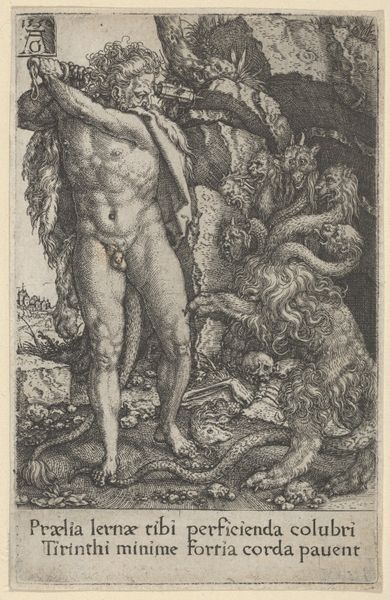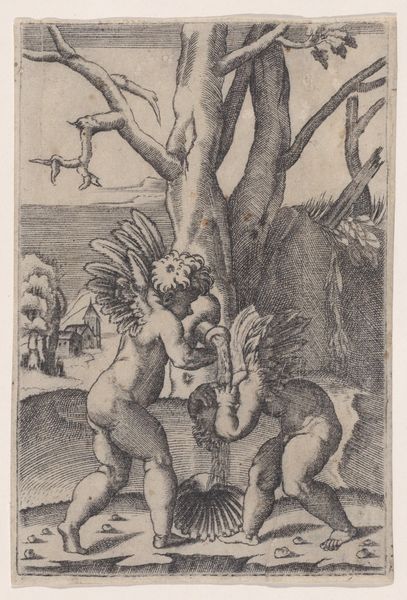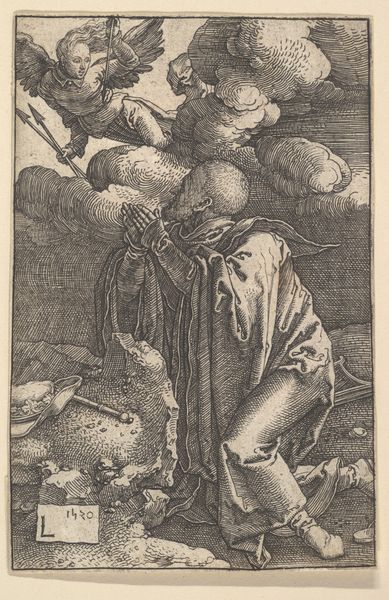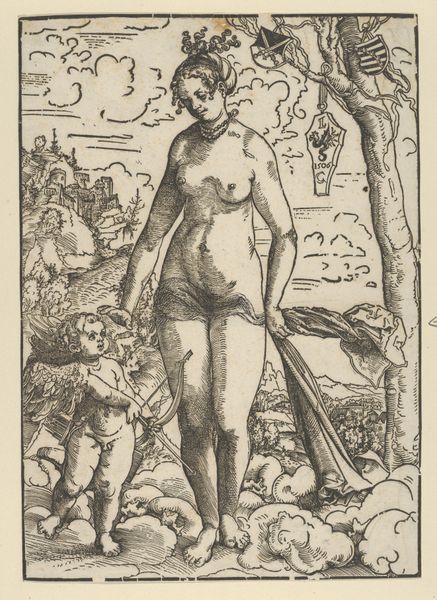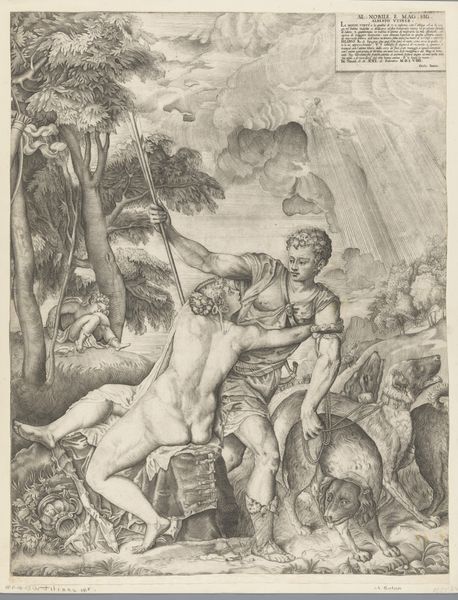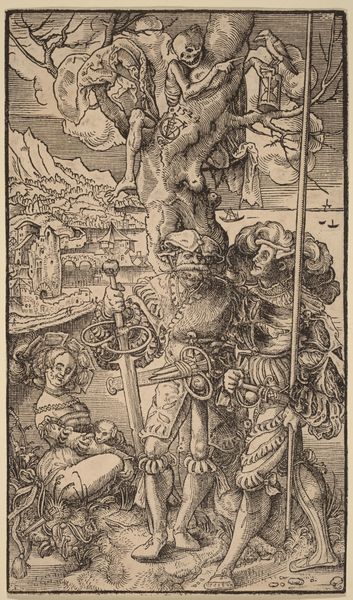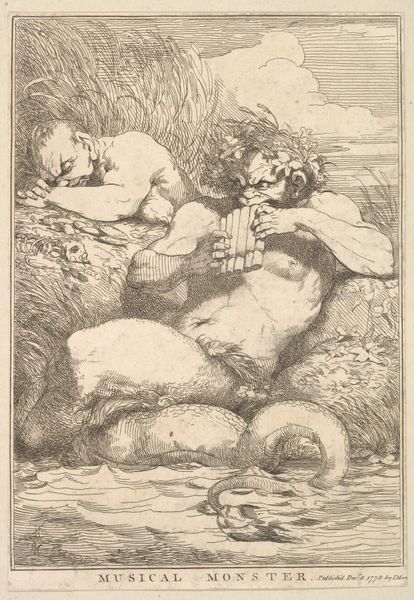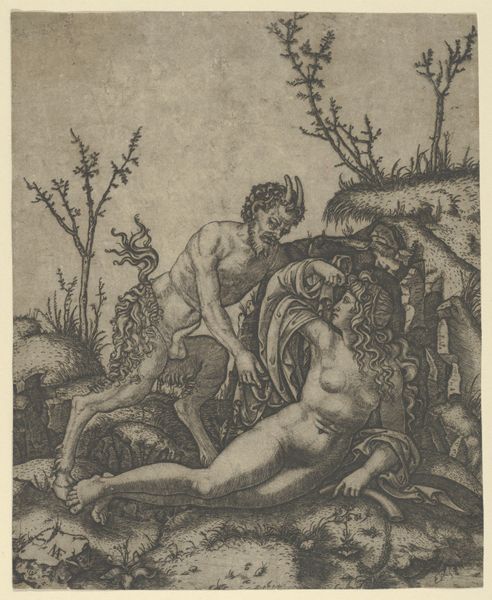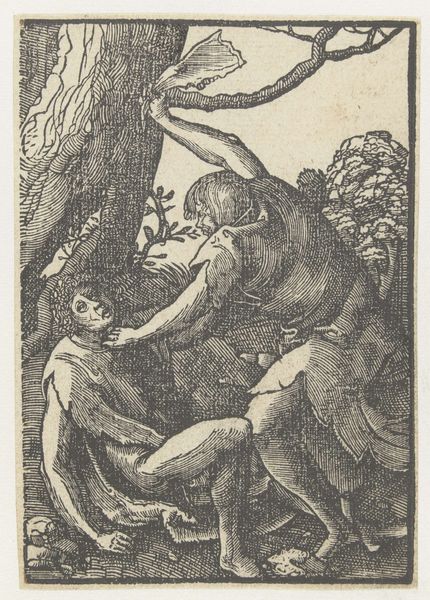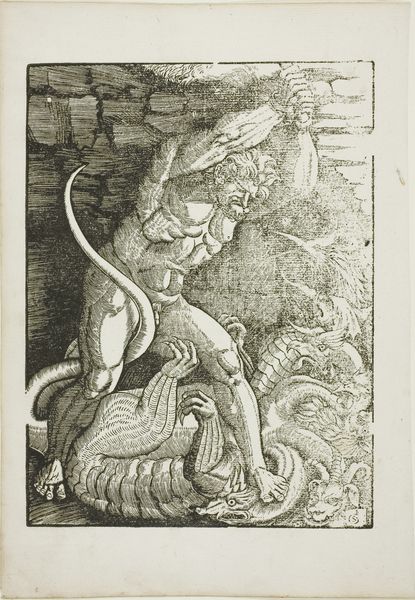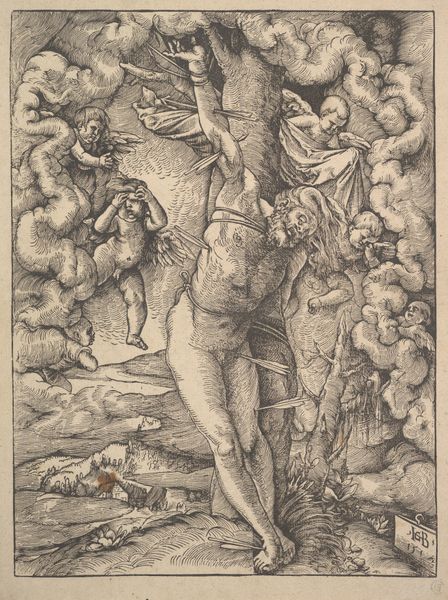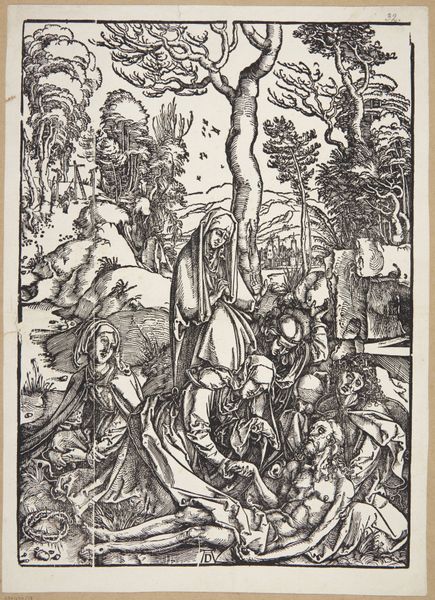
Hercules and the Hydra; wielding a torch he attacks the winged, multi-headed Hydra in rocky landscape, a hawk attacks a heron in the sky 1495 - 1525
0:00
0:00
drawing, print, intaglio, engraving
#
drawing
#
pen drawing
# print
#
intaglio
#
landscape
#
figuration
#
line
#
history-painting
#
italian-renaissance
#
nude
#
engraving
Dimensions: Sheet (Trimmed): 9 5/16 × 3 3/8 in. (23.7 × 8.5 cm)
Copyright: Public Domain
Curator: Today we’re looking at Cristofano di Michele Martini's, also known as Il Robetta’s, "Hercules and the Hydra," an engraving created sometime between 1495 and 1525. What’s your initial take on it? Editor: It’s quite striking. The dense linework creates a dynamic energy, but there's something almost dreamlike about it, a feeling of both tension and stillness. The rendering feels… theatrical. Curator: It's an incredibly potent image. Hercules, wearing his customary lion skin headdress, stands powerfully confronting the Hydra, a symbol, of course, of overcoming overwhelming, monstrous challenges. He raises the torch as he battles. Editor: Absolutely, and the contrast between the relatively smooth rendering of Hercules’s body and the detailed, almost frantic, hatching used to depict the Hydra and the surrounding landscape, heightens the drama. There’s a real tension in the composition, drawing your eye across the frame. Curator: Notice too how Robetta places this struggle within a specific setting; that idyllic landscape adds layers of meaning. Perhaps it speaks to the way the challenges always present themselves, even in the most picturesque existence. The heroic confronts what we hide in the shadows. Editor: That integration is intriguing. The tiny bird fight happening in the top portion really plays up the visual dynamism, reinforcing themes of struggle and conflict at multiple scales within the frame. The parallel is unexpected and creates a subtle yet pervasive symbolic link between the heroic and the mundane. Curator: And look at the expressions etched into the Hydra’s faces – that mix of agony and snarling defiance speaks volumes. Even monsters deserve understanding. Editor: A fair point. And overall, despite the brutality of the scene, Robetta maintains an elegance. The flowing lines, the carefully considered light and shadow... it's a testament to the technical skill of Italian Renaissance engraving. It speaks to its philosophical foundations as well. Curator: Seeing the mythical made tangible gives enduring inspiration. What resonates centuries on. Editor: For me, the engraving technique itself becomes part of the narrative, its meticulousness mirroring the epic scale of the Herculean tasks, solidifying the emotional resonance. Curator: Indeed. It's a narrative frozen in a precise and permanent art. Editor: Yes, and with that in mind I wonder what is next.
Comments
No comments
Be the first to comment and join the conversation on the ultimate creative platform.
